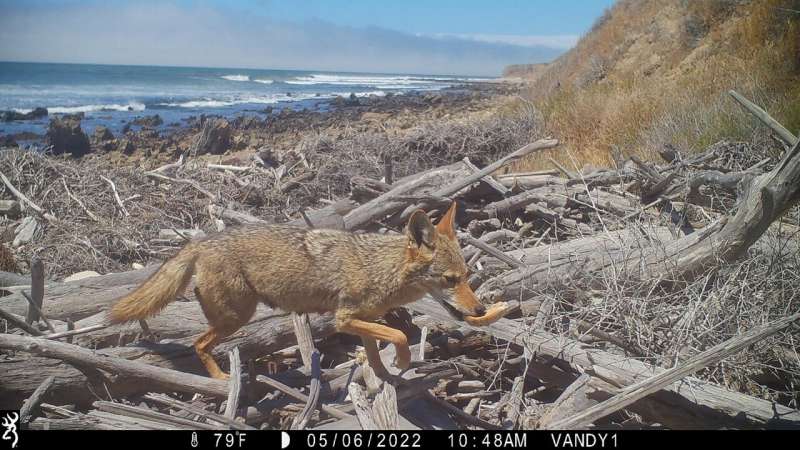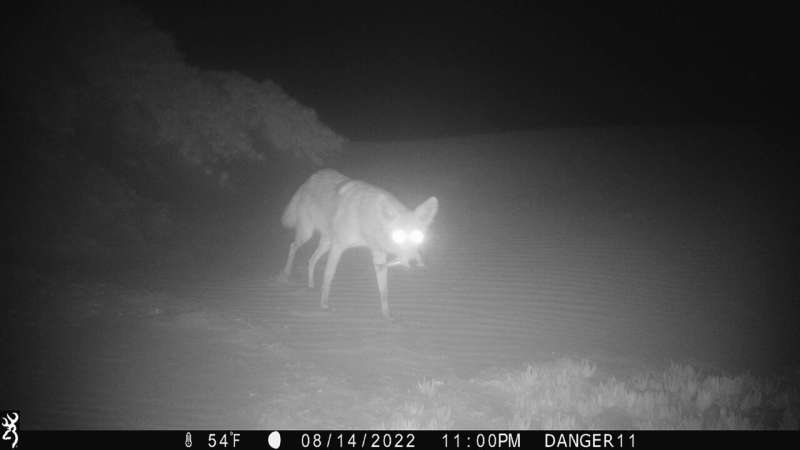August 25, 2023 report
Motion-sensing cameras set up along protected California shoreline show impact of coyotes on intertidal habitats

Bob Yirka
news contributor

A trio of ecologists and marine biologists at the University of California has found that coyotes are a more consistent consumer of marine fauna in intertidal habitats along California's shores than previously thought. In their study, reported in the journal Food Webs, Zoe Zilz, Stephanie Copeland and Hillary Young set up motion-sensing cameras along protected shorelines in southern California.
Prior research has shown that motion-sensing cameras can be an extremely valuable tool when attempting to learn more about the wild animals that live in certain habitats. Motion-activated cameras can be set up in remote locations to capture wildlife such as coyotes.
For this new study, the research trio was contacted by residents living in a community along California's Gaviota Coast, asking them to look at pictures they had taken of the varied wildlife visiting the nearby protected shoreline. Inspired by the images, the trio set up 40 motion-sensing cameras along the coastline and the shorelines of the Dangermond Preserve and Vandenberg Space Force Base—both of which also have natural, protected shorelines.

The researchers were surprised to see how many coyotes visited the shorelines at all three locations. They were also surprised to see how much seafood the coyotes caught and ate. They describe the number of visitors as many more than were expected, which makes coyotes a major consumer in intertidal habitats. And that, they note, means that they have a big impact on other species that visit the same shoreline. By leaving behind feces, the coyotes fertilize the land, allowing an abundance of plants to grow, which other animals can use as a place to live or forage.
The researchers also identified many other visitors to the area as well, such as feral pigs, deer, bobcats, mountain lions and even black bears. Smaller animals included opossums, skunks and raccoons. The team emphasizes the need for more research on similar areas as a way to learn more about creatures that can have an outsized impact on a given ecosystem.
Written for you by our author —this article is the result of careful human work. We rely on readers like you to keep independent science journalism alive. If this reporting matters to you, please consider a (especially monthly). You'll get an ad-free account as a thank-you.
More information: Zoe L. Zilz et al, Consistent foraging on marine resources by coyotes (Canis latrans) on the Southern California coast, Food Webs (2023).
© 2023 Science X Network

















